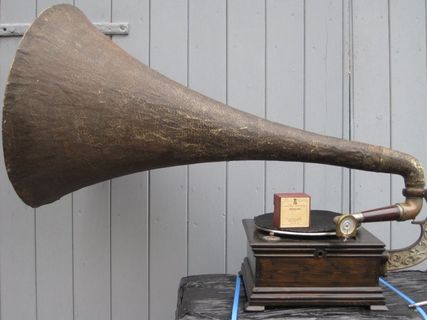WILSON HORN CONVERSION KIT MODEL 1928
Taken from The Gramophone.
Could this featured "Seymour Parts" machine be the "Kit" model?, or was there another conversion kit with an internal "box" casting?. With the internal casting the needle-track alignment would be easier to set, whereas the Seymour cast bracket would be limiting with the only adjustment being the option to adjust the length of the Seymour tonearm. Note, the back bracket is packed with wedges to bring the tonearm further back. The Wilson Horn is unique and made specifically to fit the Seymour bracket. The case is made from old wooden shipping crates for Fussels Cream.
Parts are from the Henry Seymour Catalogue| Model | Tonearm | Motor | Soundbox | Horn | Cabinet | Price | Date |
|---|---|---|---|---|---|---|---|
| Wilson Horn Conversion Kit | Seymour Tonearm Type A, with Seymour cast back bracket | Garrard 11a | Wilson Panharmonic | Homemade from Fussels Cream crates. | 1928 |

